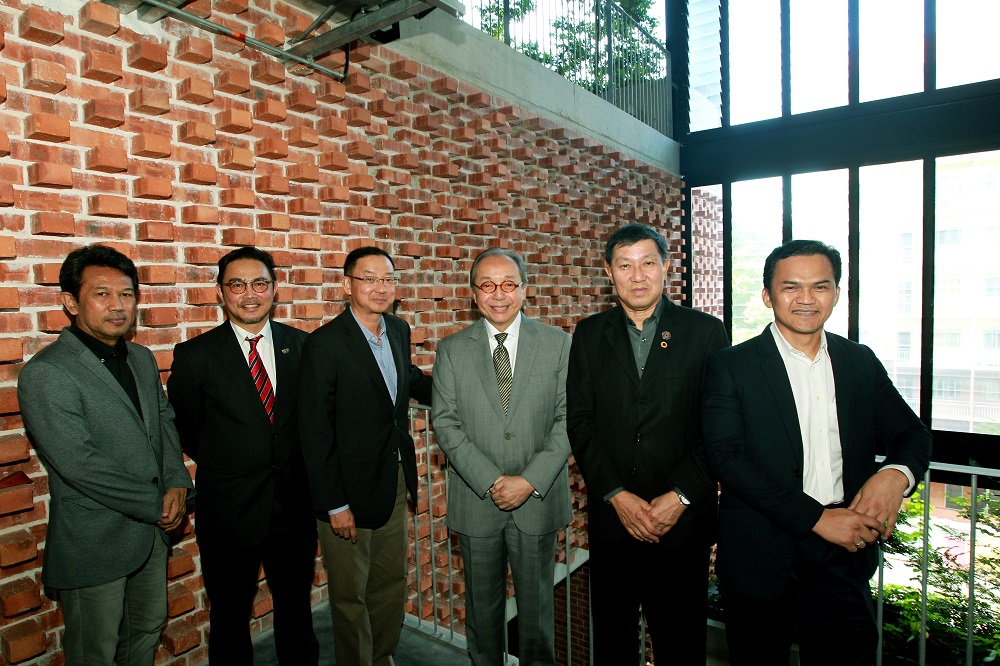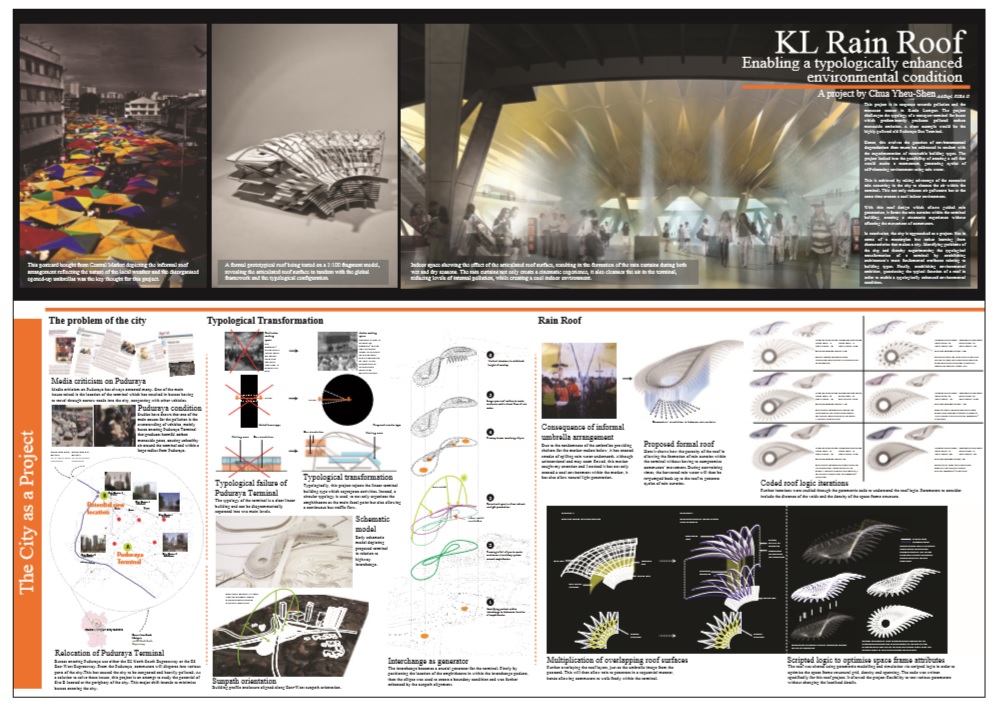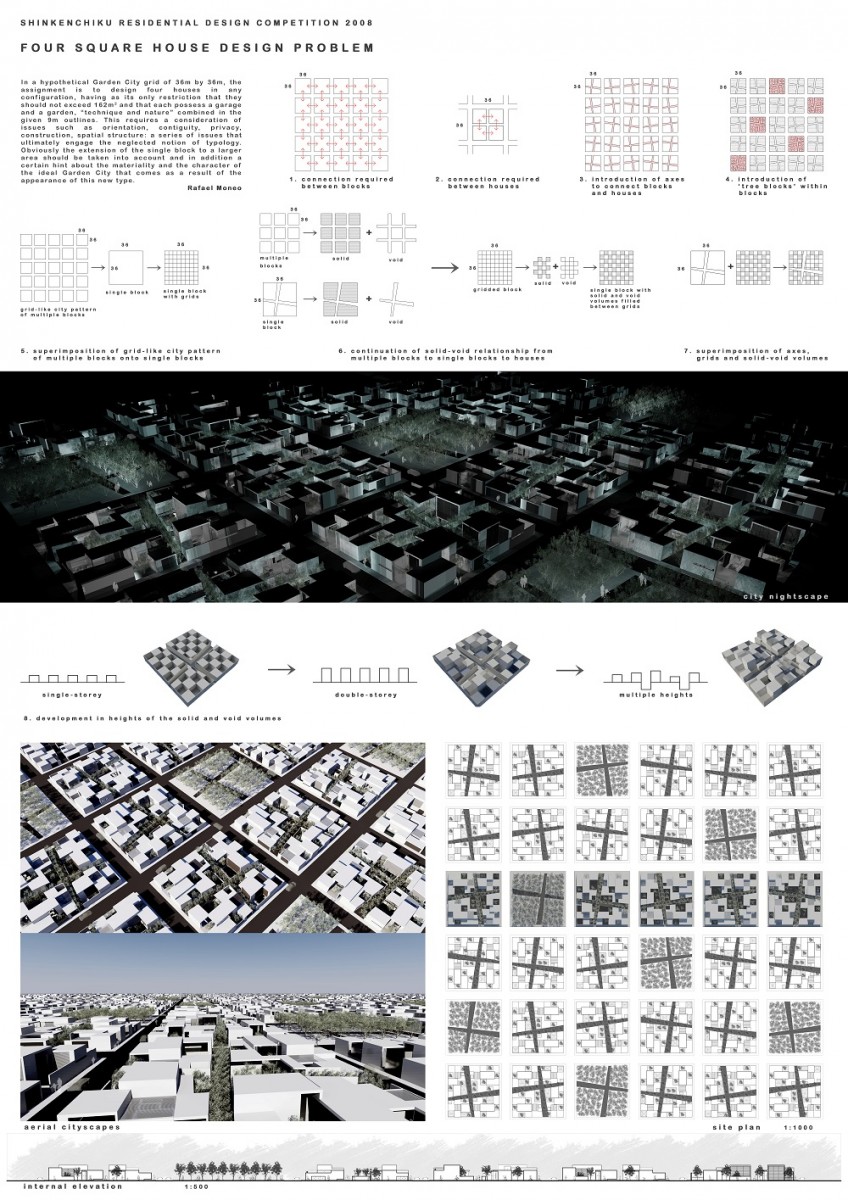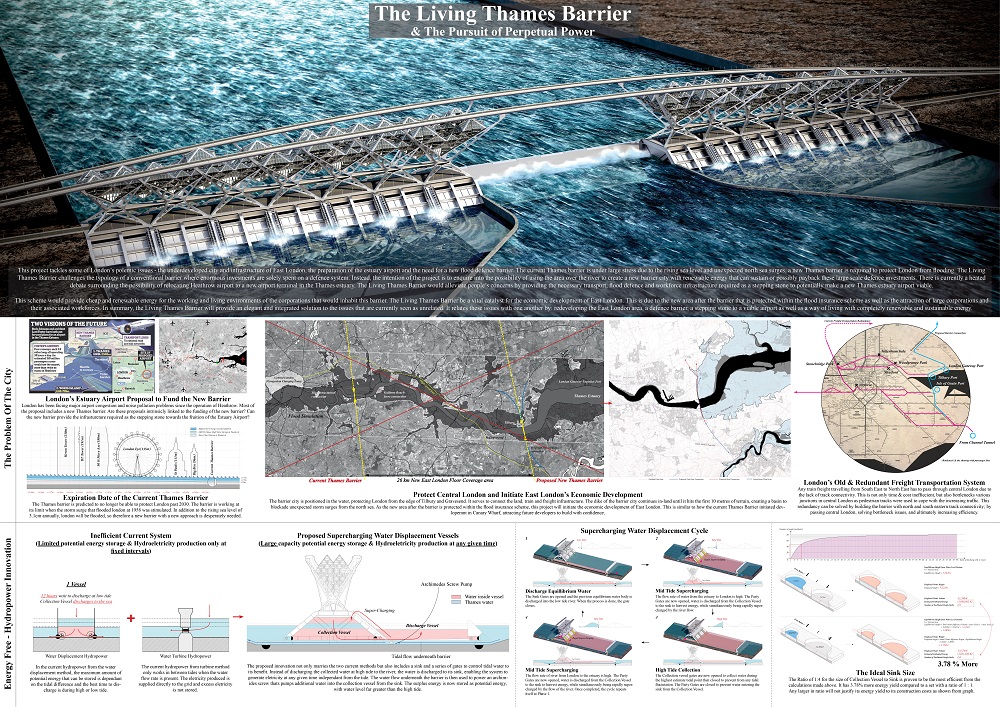Spurring on young creators in architecture

AS the saying goes, home is where the heart is. But the rising number of local graduates leaving the country to pursue careers abroad is a cause for concern.
In the last few years, developments like Iskandar Malaysia have been launched in the hope of stemming the brain drain and increasing the workforce in several industries. This includes architecture, which has seen a gradual increase in graduates leaving to work overseas, or choosing not to pursue the profession at all. Defined as the process and the product of planning, designing and constructing buildings, architecture strikes a fine balance between creativity and professionalism, and is often viewed as one of the toughest professions in the construction industry.
Together with Benéton Properties Group executive chairman Tan Sri Chan Sau Lai, the Malaysian Institute of Architects (PAM) recognises the need to encourage and cultivate creative young people to a pursue career in architecture. Launched in August 2011, the PAM Tan Sri Chan Sau Lai (TSCSL) Architecture Awards aim to foster young talents in the country.
“Architecture is indeed a tough profession. Generally, it takes years for an architect to be recognised. The PAM TSCSL Architecture Awards is a great opportunity for graduates to be acknowledged with an award that has meaning, and is mediated by ... distinguished architects and industry professionals. We believe this is a source of pride for young talents, and we hope the awards will benefit the profession in the long run,” says Chan, the benefactor and founder of the awards.
According to PAM, its objective is to demonstrate its and the benefactor’s commitment to architecture. It is to recognise design excellence by students of architecture and to introduce these final year students to the profession and the industry.
This may be the final cycle (fifth cycle) of the PAM TSCSL Architecture Awards, PAM adds. Last month, a panel comprising Chan, co-founder Boon Che Wee, PAM president Mohd Zulhemlee An, past PAM president Chan Seong Aun, past PAM president Saifuddin Ahmad and convenor Amzar Ahmed sat down with City & Country to discuss some highlights of the PAM TSCSL Architecture Awards since its launch in 2011.
City & Country: Please share the history behind the PAM TSCSL Architecture Awards.
Chan: We started the conversation in 2009. We considered the impact of competition on young graduates. We wanted to create something that would encourage them and recognise and value their projects. Since their launch in 2011, the awards have seen a positive response; hundreds of entries have exceeded our expectations.
We wanted to do something that was an initiative of the PAM and include a panel of experts to award the graduates. We wanted to give them confidence to pursue the industry and to propel them in their careers. Since the launch of the awards in 2011, we have invited fellow Asean architects from Singapore, Thailand and Indonesia to join our panel of judges.
We think the awards are advantageous for the graduates, and to be recognised by PAM and renowned local and foreign architects ... would look terrific on their CVs and it would be beneficial for their future careers.
The awards also draw public attention to PAM. And, like all industry non-governmental organisations, we need to draw attention to PAM to help educate the public on the practice of architecture. After five years, we are currently in the process of deciding how to move forward with the awards, whether to continue or to pursue similar initiatives for the institute.
Boon: One of the reasons we initiated the awards was that we sensed a loss of talent. Today, a lot of architecture graduates choose not to continue in the profession after only one or two job interviews. We find some students overseas do not return as well. We wanted to create talent retention and encourage young people to stay in the profession.
These are the first architecture awards for graduates in the country, and the first awards that allow the flexibility of presenting projects in person or electronically [Skype, for example] to allow Malaysians in foreign universities to participate as well.
We wanted to expose the graduates and train them to transition from the university to the professional working environment. They may have external examiners for their university projects, but the environment is different from the professional environment. The awards also give them a chance to speak to prospective employers. We believe these are the first student awards in the country to offer the highest grant.

How has the award benefited the architecture industry, and what are your views on the calibre of young graduates and architects in the country?
Chan: Oftentimes, we find that, as architects and artists, we tend to lack confidence in ourselves, especially in the early years of our career. However, judging by the number of entries we consistently receive every year (over 100), we believe that through these awards, the level of confidence has increased among young architects in the country. It shows that these young talents are confident that their submissions are good enough for the competition. In creative industries such as architecture, interior design and so on, it is good to receive a pat on the back every once in a while.
Boon: For the first few years, we had to work hard to create awareness of these awards. What is interesting is that we find the entries are crossing borders, due to the openness of our communication (to present in person or electronically). For example, we have received a submission from a Malaysian student who is studying in Australia, yet the project is being designed for a development in Mauritius. We find this sort of involvement inspiring for the industry.
Seong Aun: In terms of the calibre of younger architects and their submissions, we find that the entries have improved over the years. The proposals have tended to become bigger, more ambitious and more challenging and presentation styles have improved, be it from participants from local or foreign universities. PAM has publicised the winning entries in booklets, so the public can see and appreciate the exceptional work of the graduates.
Saifuddin: Some of the proposals are beyond impressive. It is interesting to see the different styles of proposals by the graduates (depending on their school and background). In fact, during presentations, we are often surprised by the level of professionalism displayed by the graduate. Some showcase work that some of our firms could not have achieved. Some appear as though they have been working for a few years. In that respect, the profession and young graduates [and young architects] are indeed advancing.

What are some of the most memorable proposals in the last five years?
Mohd Zulhemlee: For this year’s cycle, although we have not announced the winners yet, we have seen some of the most exciting and complex projects so far. I think these awards bring out the best competition among the participants. One of our favourite projects is ‘The Living Thames Barrier’, the winning proposal by Wong Guan Xiong of the Architectural Association London last year, that challenges the extortionate cost of conventional barrier typology.
The proposal looks into using the area over the river to create a new ‘barrier city’ with residential and commercial components, which can generate significant return on investment by also functioning as a hydroelectric power generator for upcoming developments in London. His design attempts to tackle some of London’s main concerns, such as the underdeveloped east side, the preparations for the estuary airport and the need for a new flood defence barrier.
Chan: Some of the submissions border on the extreme, some are rather futuristic. But the whole idea of the awards is that we are looking at design talents. That a project receives an award does not necessarily mean it is buildable. We are more interested in the idea. We have seen proposals that are sublime, poetic and calm; they don’t have to be bombastic.
A lot of the proposals tackle current issues. For example, the first winner, Mak Thur Pei of the University of Western Australia (2012), looked at the issue of low-density housing in Australia, which was quite an interesting solution, and also ‘The Living Thames Barrier’ project by Wong Guan Xiong, which attempts to find solutions and overcome the issues surrounding London’s east side. We realise that a lot of the proposals are growing more sustainable as well. We reckon the universities are encouraging the students to do more research and find these architectural solutions, which is good.
Saifuddin: One of the most memorable graduates was Mazlin Mohtar of the University of Melbourne (2013), who presented ideas for an airport structure. She presented her proposal in a manner that was as if she had been a professional for many years, as opposed to a young graduate.
Boon: We were also particularly impressed by Michele Julieana Vaz of Universiti Putra Malaysia (UPM) in 2014, who examined the idea of (structures) for multi-faith funerals. For her to tackle a subject that is sensitive and morbid, and she did it it very calmly, impressed us.
Is there a difference between proposals by local graduates and foreign graduates?
Boon: Overseas graduates tend to go for a simpler concept than graduates from local universities [who tend to go for grandiose proposals]. At times, we find there is too much visualisation, which makes it hard to see the interiors of the structures. Some of the winning proposals in the past have had simple renderings that were enough to carry us through their projects. The graduates are concerned about making the visuals photogenic or ‘Instagrammable’, but we do appreciate simple drawings and strong concepts.
There is a common thread in all the past winners; most of them won because their projects were convincing. The winners were the ones making their own decisions and the ones who chose the major aspects of their proposals, such as the site and the direction of the projects. We also find that local graduates tend to present a lot of analysis, whereas overseas graduates tend to be forthright and focused on solutions.
I think the PAM TSCSL Architecture Awards is a good platform for graduates to explore their own vision and design principles and just embrace the freedom of design. We are drawn by what appeals to them. Some graduates tend to frame or morph certain ideas into what they think we would want, when in fact we are more interested at looking at their core ideas, not ours. Most of the winning schemes display confidence in their own ideas.

What are some of the highlights of the awards since they were initiated?
Mohd Zulhemlee: It is rewarding for us to present the awards to the winners. During one of our award ceremonies, one of the winners revealed that his parents had encouraged him to become an engineer instead of an architect. Despite having different ideas on career paths, his parents were there during the ceremony and they looked so proud as he received the award. That was probably one of the most heartwarming highlights of the awards.
Chan: There was one graduate from Sabah who studied in Perth. Her father was an architect as well. And when she won the award, her father flew in from Kota Kinabalu to see her receive it. He was such a proud parent. He was proud that his daughter had exceeded him at a younger age.
I think the awards have their own joys and disappointments. The joy lies in seeing the winners when they receive their award, they are just so happy. The disappointment is in seeing the ones who did not win. So much work and energy goes into submitting a proposal. The foreign graduates may also have to deal with the time difference, some may have just got out of bed and there they were, defending their proposals to us. It is disappointing to see those who came so close to winning an award. However, we are confident that the awards have been beneficial to all parties.
Saifuddin: It is also gratifying to see where the winners are today. One of the winners, Chua Yheu Shen of Architectural Association London (2013), has kept in touch. Since winning the award, he has worked with big firms such as Fosters + Partners and KPF, and he is still actively participating in local competitions organised by PAM and Dewan Bandaraya Kuala Lumpur. We believe the awards have given him a platform to launch his career, and although he is currently based in London, he is still looking at local projects. This is what we are trying to achieve, to nurture these talents and to encourage them to work locally [and/or work on local projects as well].
What are some of challenges faced throughout the awards?
Boon: We would have liked to have more participants and reach out to more graduates. Perhaps 50% of the graduates who have submitted their proposals had not heard of PAM prior to that. It is our intention to create more visibility for PAM, so we can increase participation and activities around the awards.
Some universities have expressed frustration over the timing of the awards, which may not coincide with their semesters. But it is one of those things that, as professionals, we have to juggle as well, as far as making presentations, introducing schemes and meeting clients is concerned. So it is good that they are learning how to juggle several schemes in a short time frame.
Amzar: Our biggest challenge thus far has been to reach out to graduates abroad, especially those who are studying in the US. Because it is quite difficult to locate where the students are and the US is such a vast country with one too many architecture programmes. We have not reached as many as we had hoped. Perhaps there are Malaysian architecture students studying at the Massachusetts Institute of Technology (MIT) or Yale Univeristy, but it has proved to be difficult to get them to participate in these awards. This has been our biggest disappointment.
Mohd Zulhemlee: This year, we tried to overcome this problem by referring to the Malaysian Student Department and we have found four, one in Washington, DC, one in Los Angeles, one in New York and one in Chicago, but it was difficult to get them to participate. This is something we will continue to work on in the future.

What’s next for the PAM TSCSL Architecture Awards and PAM?
Boon: What we have achieved in the past five years goes to show how much can be done for the local architecture industry. We are looking at ways to improve the awards and are currently considering what may work. We may reconfigure the programme or look at other options to contribute to the industry and to help young talents. The details will be revealed once we have concrete details and solid plans.
Mohd Zulhemlee: We would like to continue to promote the practice of architecture and to bring architecture, arts and culture together.
Chan: We hope there will be a stronger lead in promoting architecture, arts and culture in Malaysia. Singapore, for example, has the President’s Design Award that is led by the government and helps promote architecture there. This type of initiative would help educate the public about this profession. We hope that our government would lead such initiatives in the future. We do have publications and magazines but they are mainly distributed among professionals. But it would be good for PAM to have more visibility via more publications or even TV programmes to address, critique and honour the local architecture industry. We believe it would be a boost for the nation.
More about the awards
The PAM TSCSL Architecture Awards, currently in its fifth edition, invites Malaysian students who have just completed a Master’s of Architecture course (LAM Part 2 or the equivalent in the immediate proceeding year), in Malaysia or abroad who are current PAM members. Past award winners are not eligible to participate again, however previous finalists, including recipients of commendation prizes, are eligible to submit. Schools of architecture may submit on behalf of the students.
Each year, the jury shortlists up to eight finalists and interviews them in person or via video conferencing. Finalists are required to make a presentation on their projects.
Some RM50,000 worth of prizes are awarded: the architectural award winner receives RM25,000 and a certificate; first runner-up, RM10,000 and a certificate; second runner-up, RM5,000 and a certificate; and up to five finalists RM2,000 and a certificate.
Past recipients of the PAM TSCSL Architecture Awards are Mak Thur Pei of University of Western Australia (2012), Chua Yheu Shen of Architectural Association London (2013), Fairuz Abdul Aziz of the University East London (2014) and Wong Guan Xiong of Architectural Association London (2015).
The jury this year includes benefactor and founder Tan Sri Chan Sau Lai, co-founder Boon Che Wee, PAM president Mohd Zulhemlee An, past PAM president Datuk Dr Ken Yeang, architect Dr Tan Loke Mun, interior designer Lai Siew Hong and Indonesian architect Daliana Suryawinata. Winners of this year’s cycle are scheduled to be announced on Feb 21.
This article first appeared in City & Country, a pullout of The Edge Malaysia Weekly, on Jan 30, 2017.
For more stories, download TheEdgeproperty.com pullout here for free.
Never miss out
Sign up to get breaking news, unique insights, event invites and more from EdgeProp.
Latest publications
Malaysia's Most
Loved Property App
The only property app you need. More than 200,000 sale/rent listings and daily property news.
